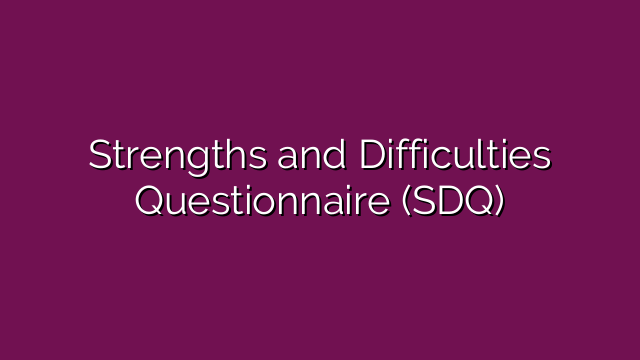Have your progress notes written for you automatically
At some point or another, therapists learn how difficult it can be to work with manipulative clients who test limits, distort language, and use guilt as a weapon. When this happens, therapists must gracefully walk the thin line between engaging with clients through empathic listening while resisting their client’s attempts at control and manipulation.
This article will delve into how to effectively work with clients with manipulative tendencies, why these behaviors occur in the first place, how to recognize the subtlety of manipulation, and provide you with some powerful strategies for working confidently with these concerns.
The Therapist’s Dilemma: Navigating Manipulative Behaviors in Counseling
Trust is therapy’s cornerstone, but what about when a client tests your boundaries by avoiding accountability, steering the conversation to fit their narrative, or using emotional manipulation to gain control? While overt disobedience is recognizable, manipulation silently thrives behind the scenes, often masked as guilt-tripping statements, twisted understandings, or spontaneous crises demanding immediate response. For therapists, the challenge begins with setting boundaries and acknowledging when support becomes entanglement.
How do you create space for clients’ struggles without getting drawn into their plans?
Recognizing Manipulation Tactics in the Therapy Room
Manipulation often goes beyond simply refusing to go along with what the therapist says. Instead, it gradually creates a new set of values to live by. Some clients may want to shift the discussion away from themselves and onto you, avoid accountability, or break boundaries to control the therapy process. Identifying these subtle tactics early helps maintain a structured and productive work environment.
Common Manipulation Strategies
When clients use manipulation behaviors, they often depend on familiar tactics to guide therapy toward their goals. Tactics can include:
- Crisis as a Distraction – Some clients manufacture or exaggerate crises whenever complex topics arise, making it challenging to address underlying issues.
- Shifting Blame – By distorting the therapist’s words or reframing events, clients may avoid responsibility by positioning themselves as victims or redirecting fault onto others.
- Guilt-Tripping & Playing the Victim – Clients may use emotionally charged statements (e.g., “If you actually cared, you’d understand why I acted that way”) to manipulate your response.
- Excessive Flattery or Over-Attachment – Some clients use charm or dependency to bypass boundaries, making it harder to challenge their behaviors.
Subtle Signs of Manipulation
Not all manipulation is obvious. Some clients employ covert tactics that can gradually disrupt the therapeutic process. Be mindful of clients who:
- Regularly change the subject when discussions become uncomfortable.
- Use ambiguous threats (e.g., vague allusions to self-harm) to elicit a specific reaction from you.
- Play therapist to the therapist, analyzing your behavior rather than focusing on their growth.
- Drop “doorknob confessions” when your clients unexpectedly reveal something deeply emotional, personal, or significant just as the session ends. This can make it hard for you to respond appropriately or enforce time limits.
While doorknob confessions are often rooted in fear of confrontation or vulnerability, they can also be a power move, leaving the therapist emotionally invested or scrambling to prolong the session. By recognizing this pattern, you can confront it head-on—strengthening boundaries while making the client feel comfortable enough to broach challenging subjects within the session’s timeframe.
The Balancing Act of Empathy and Boundaries
It can be challenging for therapists to strike a balance between empathy and firm boundaries when working with clients with manipulative tendencies. While compassion is vital in therapy, enabling manipulative behavior can harm both the client and the therapeutic relationship, which is why recognizing these tendencies and addressing them immediately, with kindness and firm boundaries, is essential.
Ethical Considerations and Therapist Blind Spots
Working with manipulative clients can sometimes blur ethical lines, making recognizing when a behavior shifts from a clinical challenge to an ethical concern is essential. Ask yourself:
- Am I enabling this client’s harmful behavior?
- Am I maintaining professional objectivity, or is countertransference clouding my judgment?
- Have I documented instances of manipulation in a factual, nonjudgmental way? (e.g., “Client denied previous statements and redirected blame to external factors.”)
If you are hesitating to set firm boundaries, consider your blind spots. Maybe you fear being perceived as harsh, or perhaps you unconsciously reward manipulative behaviors by overextending sessions or softening accountability. Regular self-reflection and supervision help strengthen clinical judgment and reinforce ethical decision-making.
Cultural Awareness in Managing Manipulation
What appears manipulative in one cultural framework might be a normative communication style in another. For example:
- In some cultures, emotional expression is indirect, which could be misread as avoidance or evasion.
- Some clients may seek reassurance through guilt as a learned relational pattern rather than conscious manipulation.
Approach each case curiously and without immediate judgment, adjusting interventions to align with the client’s background, context, and genuine needs.
Effective Strategies for Managing Manipulation
Direct acknowledgment is more effective than avoidance when faced with manipulative behaviors in therapy. Here’s how you can respond skillfully:
Identify and Name Manipulative Patterns
Instead of reacting emotionally, frame observations neutrally, such as:
- “I notice you often change the subject when we discuss accountability. Let’s explore why that happens.”
Reinforce Boundaries Without Guilt
If a client persistently uses guilt or crises to extend sessions, respond with the following:
- “This is important, and I want to give it proper attention. Let’s start with this first thing next session.”
Address “Doorknob Confessions” Proactively
If a client frequently drops heavy disclosures as time runs out, preemptively set expectations:
- “I notice we often reach big topics at the very end of our sessions. Let’s make space for this earlier next time so we can discuss it fully.”
Use Reflective Listening to Redirect Manipulation into Growth
Instead of pushing back when a client guilt-trips or avoids responsibility, help them reflect:
- “It sounds like this situation made you feel powerless. How do you think taking ownership might change that?”
Tailoring Interventions for Trauma, Culture, and Personality Disorders
Understanding why manipulative behaviors arise is key to responding effectively. These behaviors often stem from trauma, cultural norms, or personality disorders, each requiring a distinct therapeutic approach.
Trauma-Informed Approach
Manipulation may be a learned survival mechanism in trauma survivors. Instead of viewing it as intentional deceit, recognize it as a protective response rooted in past experiences. A trauma-informed approach involves:
- Building trust and safety before addressing manipulation
- Recognizing defensive behaviors as survival tactics
- Guiding clients toward healthier coping mechanisms over time
Cultural Considerations
Cultural norms shape communication, conflict resolution, and emotional expression, meaning what appears manipulative may be culturally ingrained behavior. Ensure cultural competence by:
- Educating yourself on the client’s cultural background
- Exploring how their culture influences interpersonal dynamics
- Adjusting interventions to respect cultural values while addressing problematic patterns
Personality Disorders and Manipulation
For clients with personality disorders, manipulation is often a core symptom rather than a conscious strategy. Effective strategies include:
- Setting firm yet compassionate boundaries
- Using disorder-specific, evidence-based interventions (e.g., DBT for BPD)
- Seeking supervision or referring out if manipulation becomes unmanageable
Therapist Self-Care & Professional Growth
Managing manipulative clients can be emotionally exhausting, leading to frustration, self-doubt, or burnout. Protecting your well-being is not just important—it’s essential for maintaining clinical effectiveness.
Self-Reflection: Are You Reinforcing Manipulation?
To avoid unintentional reinforcement, ask yourself:
- Do I avoid confrontation to maintain harmony?
- Am I overly invested in gaining this client’s approval?
- Have I softened boundaries or excused behavior out of guilt?
- Do I hesitate to address manipulation directly?
If you answered “yes” to multiple questions, consider adjusting your approach or seeking guidance.
Seeking Support & Professional Consultation
Therapists aren’t immune to manipulative tactics, and there’s no shame in seeking help when a client dynamic feels overwhelming. Support options include:
- Supervision or peer consultation for perspective & guidance
- Personal therapy to process emotional reactions
- Referral to a specialist when necessary for both you and the client
Continuing Education & Ethical Growth
Stay ahead by investing in professional development:
- Attend workshops on personality disorders & manipulation management
- Refine ethical decision-making through supervision & case consultation
- Update documentation skills to track manipulative behaviors objectively
When to Seek Additional Help
If a client’s manipulative tactics affect your ability to maintain objectivity or set boundaries, it’s time to reassess. Consider supervision or referral when:
- You start to feel emotionally drained, resentful, or overwhelmed regularly
- Your judgment is clouded, leading to ethical concerns
- Your client’s needs exceed your expertise or scope of practice
Referral isn’t failure—it’s an ethical decision that ensures you and your clients get the support you need.
Conclusion
Pushing back against your client’s manipulation isn’t about exposing their lies, inconsistencies, or “winning” an argument—it’s about working with them to recognize where these tendencies come from, ensuring you work together to build authentic, lasting change, and staying faithful to yourself as a therapist. Setting firm boundaries is one of the most helpful things you can do for yourself and your clients. Trust your instincts and stand your ground with confidence; true growth for you and your clients comes from working through these difficult moments together.
We’ve all been here: you reach the end of the day, only to remember the stack of progress notes waiting for you at your desk— another obstacle standing in your way to getting home on time. This is where Mentalyc shines – seamlessly simplifying our documentation process, ensuring everything is organized and ready to submit within minutes. No more wasting valuable time and energy – finish each day confidently, knowing you’ve handled your responsibilities without breaking a sweat! Giving you back ample time to rest and recharge so you’ll be fully present for your clients tomorrow! Try Mentalyc today!
FAQ about Managing Manipulation in Counseling
How Can I Identify Manipulative Behavior in Therapy?
Watch for consistent patterns of avoiding accountability, guilt-tripping, or distorting conversations. Manipulative clients often attempt to control the session flow through manufactured crises or emotional outbursts. Be mindful of blame-shifting and efforts to make you feel responsible for their choices—these are key red flags.
What’s the Best Way to Manage Manipulative Clients?
Set firm but compassionate boundaries while addressing manipulation directly and professionally. For example: “I’ve noticed you often change the subject when we discuss your responsibilities. How can we work through this pattern together?” Always document manipulative behaviors objectively in your progress notes, focusing on specific actions rather than subjective judgments.
How Do I Balance Compassion with Confrontation?
Recognize that manipulation often stems from trauma or learned survival tactics. Stay assertive yet empathetic by validating the client’s struggles while redirecting them toward healthier communication. If you are overwhelmed, seek supervision or consider a referral if the manipulation becomes unmanageable.










